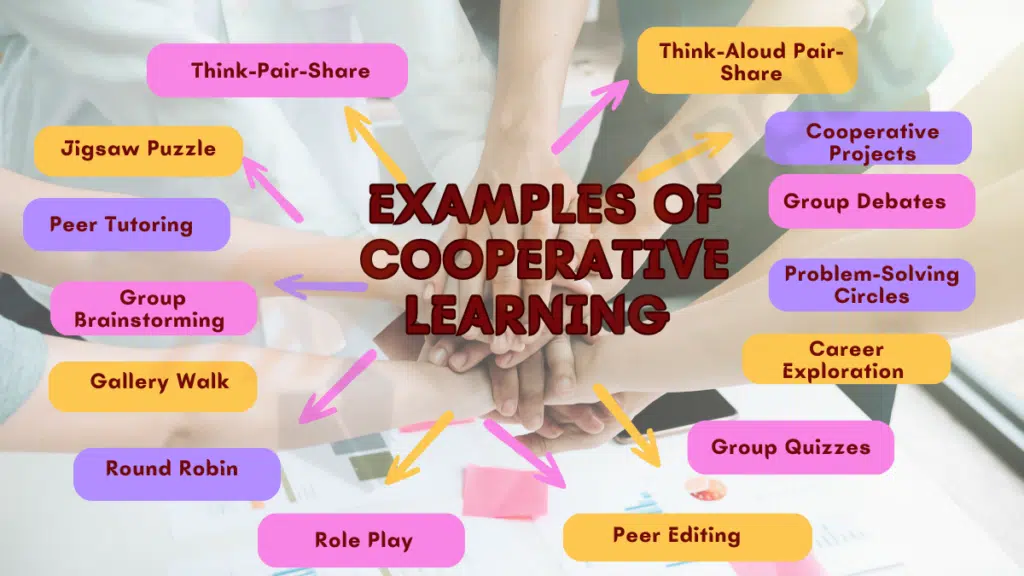15 Examples of Cooperative Learning in Students
Cooperative learning is a teaching strategy that encourages students to work together in small groups to achieve common learning goals.
This approach not only fosters collaboration but also enhances critical thinking, communication, and problem-solving skills.
In this blog post, we will explore 15 easy and straightforward examples of cooperative learning activities that can be implemented in various educational settings.

Examples of Cooperative Learning
1: Think-Pair-Share
Students think individually about a question, pair up with a partner to discuss their thoughts, and then share their ideas with the whole class.
2: Jigsaw Puzzle
Divide a larger task or lesson into smaller parts. Each group is responsible for mastering one part, and they later teach it to the entire class.
3: Peer Tutoring
Assign students as pairs or small groups where one student teaches a concept to their peer. This reinforces learning for both the tutor and the tutee.
4: Group Brainstorming
Students work together to generate ideas, solutions, or responses to a specific question or problem.
5: Gallery Walk
Post different pieces of student work around the classroom. Students move around in small groups to discuss and provide feedback on each piece.
6: Round Robin
Each student takes a turn to contribute to a discussion or answer a question in a predetermined order, ensuring that everyone participates.
7: Role Play
Assign different roles to students within a scenario or historical context, encouraging them to work collaboratively to act out and understand complex situations.
8: Peer Editing
Students exchange written assignments and provide feedback and suggestions to improve each other’s work.
9: Group Quizzes
Create quiz questions related to the lesson, and students work in groups to answer them collaboratively. This promotes discussion and reinforces learning.
10: Problem-Solving Circles
Students gather in small circles to solve a problem together, sharing their thoughts and ideas in a structured format.
11: Think-Aloud Pair-Share
One student explains their thought process while solving a problem or completing a task, and their partner provides feedback or asks clarifying questions.
12: Cooperative Projects
Assign groups of students to work on a project together, such as creating a presentation, building a model, or conducting research.
13: Peer Review Panels
Students form panels to review and evaluate each other’s projects, presentations, or essays based on predefined criteria.
14: Group Debates
Organize debates on various topics where students must collaborate to construct persuasive arguments and counterarguments.
15: Collaborative Storytelling
Students take turns adding sentences or paragraphs to a story, building upon each other’s ideas to create a complete narrative.
Cooperative learning is a powerful educational approach that can make learning more engaging and effective for students.
These 15 simple examples of cooperative learning activities can be easily implemented in classrooms, promoting teamwork, communication, and a deeper understanding of the subject matter while keeping the learning process fun and interactive.



Leave a Reply